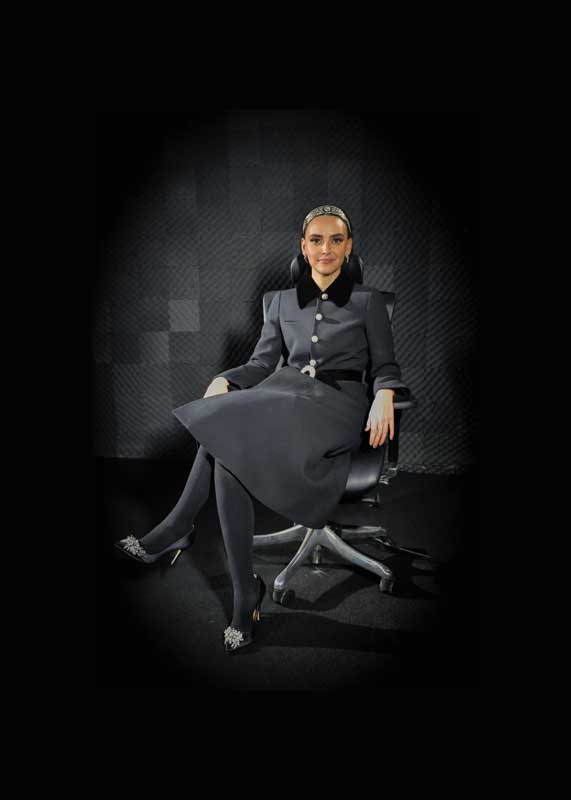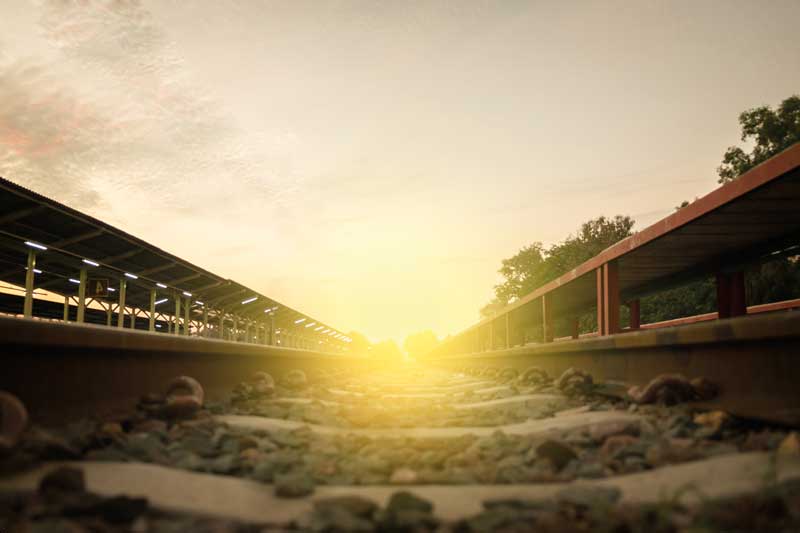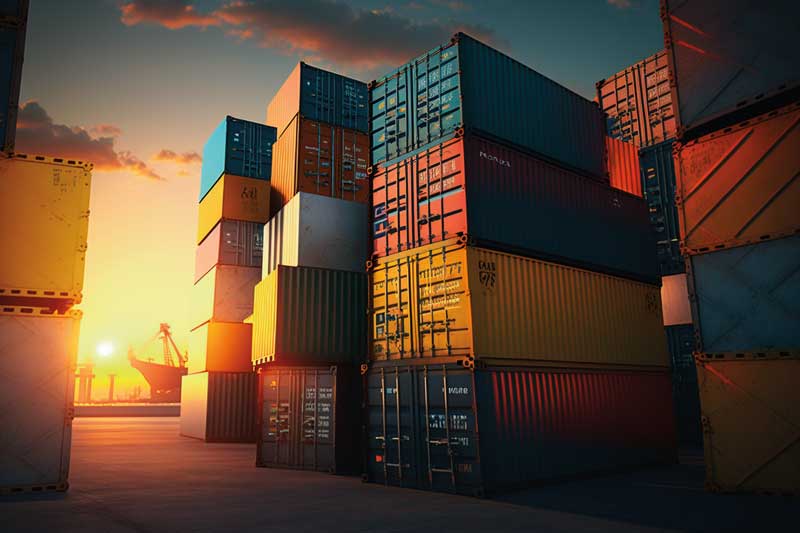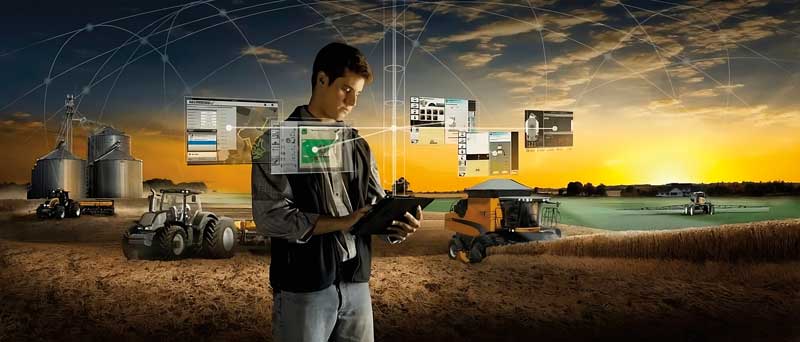The CIIT is not only an iconic project in itself; "it's an achievement after 100 years; it's historical, symbolic, but it also represents a turning point in what supply chains and trade could become," explains Altagracia Gómez Sierra, also Coordinator of Regional Economic Development and Relocation in the exercise Dialogues for Transformation, in an interview with Real Estate Market & Lifestyle.
And she continues, "it can connect not only the trade between two very important ports in Mexico – Salina Cruz and Coatzacoalcos – it can connect world trade, what comes from Asian countries and can intern them to the east coast of the United States, and it's a different way of conceiving Mexico's relationship with the world; if we think that the Gulf of the country is not only connected to Central America, which is an important connection, but it's also a border with the United States, which is the economic region where we are vertically integrated."
A lawyer by profession, Altagracia is the president of Promotora Empresarial de Occidente, one of the largest industrial and financial conglomerates in the country that participates in sectors such as food, automotive, public transportation, real estate development, general warehousing, and logistics, among other areas, representing 20,000 direct jobs and countless indirect jobs through the value chains they represent.
Gisselle Morán (GM): What do you think of the Transístmico as a project of the four borders?
Altagracia Gómez (AG): It's a watershed, not only for it to be compared with the Panama Canal project, but for what it can generate in itself. We have everything for those nine Development Poles to work; the reality is that it depends on us to plan properly from issues of natural resources, land use planning, housing, and service for the collaborators such as school, health, etc., but also connection with the academia so that there is skilled labor and that it works the first time.
GM: Would the Transístmico be one of the most important projects to continue investing in for the next governmental administration?
AG: I consider that all infrastructure projects have long-term cycles and in this sense, of course, the Transístmico will continue to be decisively supported, as well as replicating the model of industrial corridors that benefits the country. The establishment of regional vocations, as we call them, is essential so that economies of scale can be generated, which can generate large infrastructure works to generate virtuous circles and generate what we ultimately want, which are investment ecosystems with supply chains, local suppliers, which these projects precisely need to trigger.
On the other hand, the corridor being built in Dos Bocas, which goes towards Chontal in the Southeast of the country. There are corridors that have formed naturally, but most of these have been planned, with sectoral incentives, and the idea is that what works can be replicated elsewhere. Why not think about connecting Sonora and Sinaloa, for example? Why not think about connecting some corridors near the border, not just in Tijuana; what can be done in Mexicali, there are many cities that we can unite in vocation.
GM: Is it necessary to develop all complementary infrastructure, expand ports, generate more and better airports, highways, etc.?
AG: Of course, I believe that if we look at the country on the map and observe the products and services that have flourished, we can see that they have occurred in industrial corridors. For example, in the Bajío, there is the automotive industry; the Northern corridor with manufacturing; those that are close to the border, the corridor in Ramos Arizpe, in Saltillo; in Monterrey, in Nuevo León, where they are mainly in auto parts or auto transport, they are the number one in trailer exports.
On the other hand, the corridor being built in Dos Bocas, which goes towards Chontal, in the Southeast of the country. There are corridors that occurred naturally, but most of these were planned, with sectoral incentives, and the idea is that what works should be replicated elsewhere. Why not think about connecting Sonora and Sinaloa, for example. Why not think about connecting some corridors near the border, not only in Tijuana; what can be done in Mexicali, there are many cities that we can unite in vocation.
GM: Is it necessary to develop all complementary infrastructure, expand ports, generate more and better airports, highways, etc.?
AG: Of course, I believe that if we look at the country on the map and observe the products and services that have flourished, we can see that they have occurred in industrial corridors. For example, in the Bajío, there is the automotive industry; the Northern corridor with manufacturing; those that are close to the border, the corridor in Ramos Arizpe, in Saltillo; in Monterrey, in Nuevo León, where they are mainly in auto parts or auto transport, they are the number one in trailer exports.
On the other hand, the corridor being built in Dos Bocas, which goes towards Chontal, in the Southeast of the country. There are corridors that occurred naturally, but most of these were planned, with sectoral incentives, and the idea is that what works should be replicated elsewhere. Why not think about connecting Sonora and Sinaloa, for example. Why not think about connecting some corridors near the border, not only in Tijuana; what can be done in Mexicali, there are many cities that we can unite in vocation.
GM: With the experience you have through Minsa, what do you consider to be some of the main vocations of the Trans-Isthmian Corridor?
AG: There are many opinions on this. The first thing I would say is that agribusiness and agriculture are a priority sector for Mexico and the world, in terms of food security as a human right, but also the food industry which grew even during the pandemic; when everything else decreased by 10%, the food industry grew by 8%. Culturally, we have the phrase: "without corn, there is no country"; we are the Mesoamerican culture of corn, and that is something we cannot lose. The specific vocation of the Isthmus or the Trans-Isthmian, well, it is very varied and there are areas that are decidedly for agriculture, for different crops. Veracruz has a very good corn cultivation area, for example, and also some that are heirloom or biodiverse; not just the hybrid seed that is found in Sinaloa or other parts of Mexico, but certainly there are specific local vocations.
GM: As an entrepreneur, what factors and requirements would you consider to set up a plant in the Trans-Isthmian Corridor?
AG: It's a somewhat complex question because we would have to ask what type of plant it is. It's not the same, for example, to set up a Dina plant in partnership with a Chinese partner. Of course, we would locate ourselves in a port close to where there are imports from China and gradually increase the national content because that is something that matters a lot to us; within the Trans-Isthmian, we want national content because it's not just about capturing value, it's about creating it.
In the case of Minsa, as I mentioned about Veracruz, it would be on the other side, since both the corn cultivated in Veracruz is good and if I had to import corn from the United States, the Gulf is much better, with a port connected to Asia primarily, and exports to Chiapas, and to the United States would also go through Veracruz. If I had to expand to a thermoformed plastic plant for the automotive industry, the Gulf is certainly better as most cars come out from there. These are large-scale projects, of great extent, and we cannot rush them. From the announcement of investment to putting a foot in the plant, it's at least three to four years beyond all that it involves. You don't start at 100%; so, I would say, I think it should be very attractive for everyone at least to analyze. There are nine poles, and there are already five in place today, with five remaining. I would say to them, just because they don't have ports, they are not unattractive; they are very close to the largest consumption area in Latin America: Mexico City, which is the center of the country. In the Bajío, I think what's missing is for the rest of the infrastructure to come together, and I believe that in a short period, that will be completed and functioning at 100 percent.
GM: What do you mean by the rest of the infrastructure coming together?
AG: Highway bypasses, energy, investments, not only in generation but also in transmission lines and water, the last mile which must be a commitment of both entrepreneurs and the government, and efforts are being made to ensure it happens.
GM: What is needed for companies to arrive and generate everything?
AG: A leading company is as strong as, or even stronger than, a public policy, and in that sense, there is nothing better than the example: the first one to arrive starts to set up, which will trigger the ecosystem itself and also the urgency to generate the last mile we talked about.
GM: With the demographic bonus, skilled labor, universities, are we ready for nearshoring?
AG: I believe we are ready, and we are preparing to be even better. Prepared, because being ready and being prepared do not necessarily mean the same thing; we want investment to come with planning. I think Mexico has it all. When people have asked me how Mexico is doing, I tell them that it's a paradise for the person who lives here, it's a paradise for the vacationer, but also for the person who invests here. It's hard to find conditions like those Mexico has in the world, and in that sense, I believe all should come, considering import substitution. It is the best possibility Mexico has to break the cycle of poverty and inequality, and I think the leadership both entrepreneurs and politicians have will be everything that needs to be done to not miss this opportunity and consolidate themselves not only as a regional leader but also as a global one. It's a new form of globalization, it's a new form of capitalism, and in it, Mexico can be a leader.
GM: You are on many Chamber councils, representing many sectors, what is your feeling about the moment Mexico is experiencing economically and geopolitically?
AG: I believe it's a unique moment for Mexico; in that sense, I think Mexico is on everyone's lips. Mexico is in fashion, and what we have to do is not only make it fashionable for foreigners by incentivizing Foreign Direct Investment, but also Mexican investment. It's a bit of what I was saying: yes, we have to create conditions for outsiders to come. But we also have to focus on including those we have never included before who can be included. You mentioned talent and skilled labor; we are the OECD country that produces the most engineers. We have 149,000 engineers graduating from public schools every year, and over 400,000 young people graduate from various careers. We produce twice as many engineers as Brazil annually, and while there are more engineers in the United States, it's not per capita because there are more overall. Our demographic bonus is 19 years. We are a powerhouse, both in the productive sector and in the consumption sector, meaning companies have to be here for both reasons; we are a very important market, not just an important industry.
GM: What would be your best dream, something you'd say: 'that's what I want for Mexico'?
AG: I believe that if we work on the pillars for a Mexico that generates prosperity, a Mexico that provides security in all areas: legal, public, social. That we move towards formalization, energy security, food security, and that it generates mobility. Urban mobility is something we absolutely must address because it's the first impact on people's well-being, but also geographic mobility, which is migration from rural to urban areas and from south to north globally, and most importantly, social mobility, where how you're born doesn't determine how you'll die. That there are opportunities, whether through education, work, profession, trade, or entrepreneurship, for people to succeed, and I believe it's a Mexico we are working towards, a Mexico of hope, a much stronger Mexico.
GM: From your perspective, do you consider it a success that the Interoceanic Corridor was built along with the Mayan Train, the airport, and other projects?
AG: I believe there is always a good time to undertake iconic, symbolic projects. When you have clear principles, it's easier to understand what the objectives should be. In that sense, I think these are different projects. The AlFA was a symbol that things couldn't continue as they were; the Mayan Train was about social redemption, acknowledging our historical debt to the south, which historically had been overlooked, and in this administration, its growth outpaced other states by double digits. The obligation now is how to ensure sustainability after the project is completed. And the Trans-Isthmian Train, which is a bit of a combination of both: the symbolic aspect of the south, the symbolism of being able to execute a well-made project with local suppliers, etc., but it also adds another layer, another chapter, which is competitiveness.
It's not just a social issue; it's also something that can bring economic benefits and can be done while protecting the environment because it will unleash a huge industry; for wind energy, a huge industry. There has just been an announcement of a green hydrogen plant that will lead to the generation of unique circular economies and industries.
GM: What else would you like to add, Altagracia?
AG: I would say that the continuation of these projects is vital in Mexico. They will be replicated, and most of the entrepreneurs who participate will be well-compensated. Note, not by the government, but by the ecosystem that will be generated. In this sense, I believe everyone can rest assured that future projects or investments will be carried out with proper planning, profitability, and responsibility.
GM: How do we tell the world that Mexico is the place to invest?
AG: The first thing I'll say is that we are competitive, we are also reliable, and that's something on which nearshoring is heavily based, and something not often directly addressed is trust. We are a country with institutions, we celebrate the same democratic values, we are geopolitically closer to you, not just in location, and we won't let you down. And finally, we are convenient, that's the truth; in any business deal, both parties seek convenience, and right now, we are in a position where we have something to offer, making it very convenient for everyone.
BUSINESS DIVERSIFICATION
Promotora Empresarial de Occidente is an industrial and financial group involved in the primary, secondary, and tertiary sectors, including some of the most iconic real estate developments in Latin America, among them Puerta de Hierro, considered one of the most valuable in Mexico and one of the top 5 in Latin America. Alongside this, they have constructed 180 real estate developments in the country, ranging from social housing to tourist residential areas.
They are also part of the Minsa group, one of the leading producers of corn flour for tortillas; Almer, the largest general warehouse in Mexico; DINA, the only national brand of urban and suburban buses with three thermoformed plastic plants for automotive use, serving clients such as Tesla, Audi, Volkswagen, and Mercader Financial.
Coordinator of the Dialogue for Transformation Table
Responding to the call from Dr. Claudia Sheinbaum to coordinate the Dialogue for Transformation table, which involves regional economic planning and relocation, Altagracia Gómez recalled that the companies of Promotora Empresarial de Occidente, which she leads, were born with a social vision and ambition, with specific missions to formalize support for SMEs or self-employment, and even for the acquisition of their first homes, which prompted her to join the Dialogues.
What does this planning consist of? There are ten principles, or a few less, which basically consist of generating prosperity, economic growth, and GDP development; these macroeconomic metrics that benefit everyone, such as formal employment, but this must result in promoting, protecting, respecting, and guaranteeing both civil and political rights, which are freedoms, as well as economic, social, and cultural rights, such as housing, health, access to water, internet, and education.
The second principle is the mixed economy, which is the leadership of the State with decisive private sector participation in coordination and zero corruption. The third is planning, how do we ensure there is planning, so that investment is made without improvisation, which is something that I believe is important for both public and private enterprise. The fourth is innovation, another concept on which I believe we all agree; that we need to move from industries with lower added value to those with higher added value, and that can decisively make a difference in poverty and inequality in Mexico, and also in the well-being of Mexico.
And the other is inclusion, how do we include those we have never included before. How do we include that market that has never had access to capital or credit; how do we include women, how do we include young people, and in this sense, there are projects in Chiapas and Oaxaca. And the last pillar is sustainability, how do we ensure that when we conduct that holistic analysis and with investment projects, the profitability of the company is considered, but also of the collaborators and the community where that company will be established. The aim is for projects to be economically, socially, and environmentally profitable.
Text:Gisselle Morán
Photo: MARIO RAMÍREZ / PATTANAPHONG19 / MAHARUN NESSA / COMUNILOG / ABRAHAM CISNEROS / FREEPIK / OKAN EKINCI









